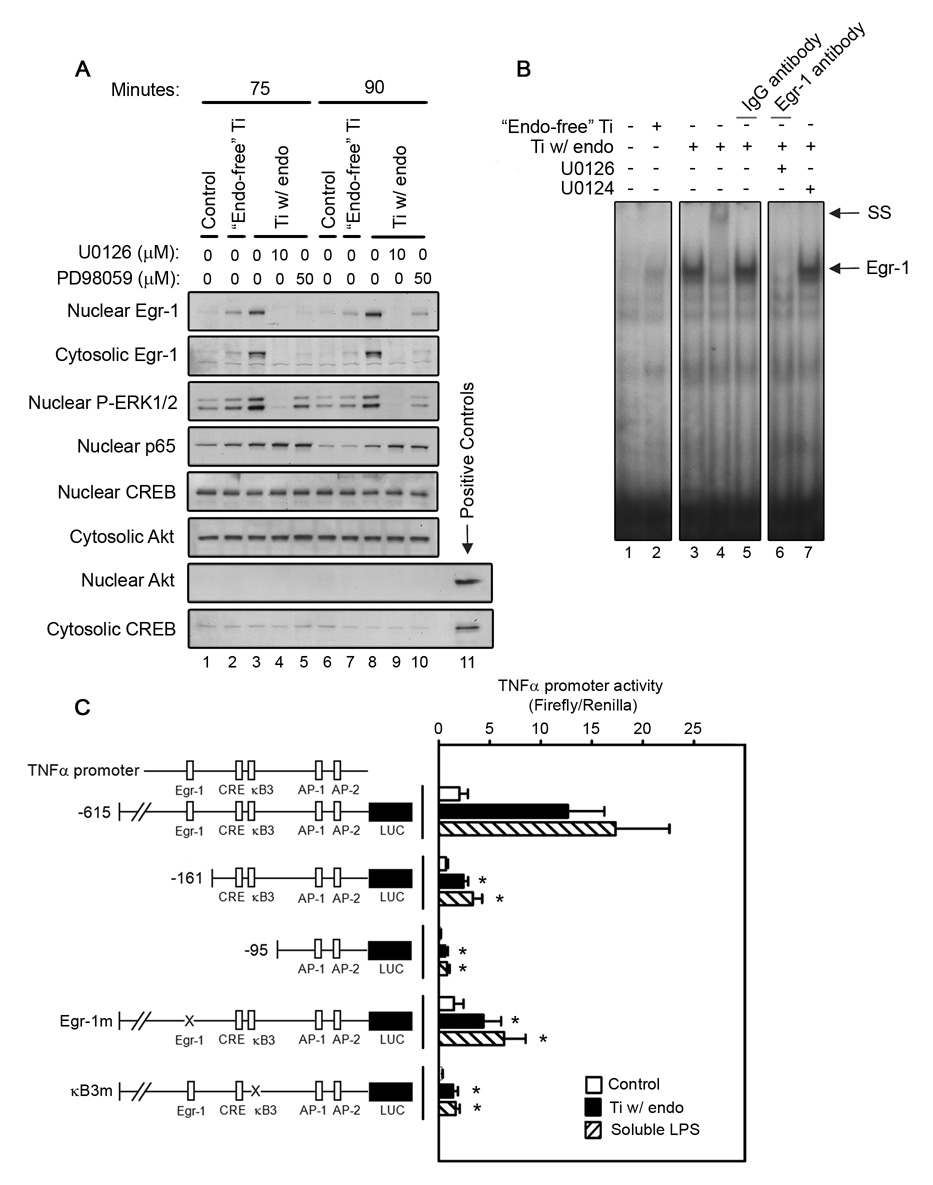Fig. 9.
Egr-1 expression is stimulated by titanium particles, potentiated by adherent endotoxin, dependent on ERK1/2 activation, and required for activation of the TNFα promoter. RAW264.7 macrophages were stimulated with either “endotoxin-free” titanium particles or titanium particles with adherent endotoxin for the indicated times in the presence of absence of either U0126 or PD98059. As a control, cells were cultured without titanium particles or inhibitors (PBS; vehicle). All groups received a mixture of vehicle controls, such that all contained 0.04% PBS and 0.1% DMSO. Cytosolic and nuclear fractions were isolated as described in Materials and Methods. (A) The presence of Egr-1, phospho-ERK1/2, and NF-κB in the cytosol or nucleus was assessed by Western blotting (first–fourth panels). Purity of the fractions was confirmed by assessing CREB and Akt levels (fifth–eighth panels). Nuclear and cytosolic aliquots were used respectively as positive control for CREB and Akt. Western blots are from the most representative of four experiments. (B) Binding to an Egr-1 specific region within the TNFα promoter was assessed by EMSA following stimulation for 90 minutes. Supershift analysis compared an Egr-1 antibody and an IgG non-immune control (panel 2, lanes 4–5). EMSA results are representative of three experiments. (C) TNFα promoter activity (mean ± SEM of six experiments) was measured using luciferase reporter constructs following stimulation for 4 hours. The deletions and mutations in the TNFα promoter constructs are shown. Asterisks denote p<0.05 compared to groups with the same stimuli and full-length promoter.

